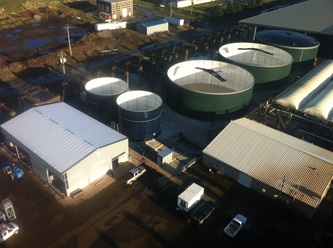UPDATE: Additional information about the digester’s automatic shut-off system …
In regards to the statement by Regenis, Port Manager Michele Bradley provided this correction: “The POTB not only designed the digester to incorporate the failsafe technology, but our staff used it daily when we were operating the digester. It could be monitored remotely, adjusted remotely, had real-time flow and equipment info and gave warnings via text and email for any issues.
BioGas has all of the info on the computer system, provided by the POTB. They have not yet had the internet connected nor have they updated the software for the monitoring, to my knowledge. When the Port decided to cease digester operations two years ago, we did not upgrade the software.
I am hoping that the misstatement will be corrected by Regenis. They have been very responsive this week and are following all of the protocols necessary.”
Results of water samples taken from Tillamook Bay indicate there was no impact on water quality in the bay from the release of liquid waste from the Port of Tillamook Bay digester facility on July 22nd, and currently operated by Regenis. The Oregon Department of Agriculture shellfish and food safety programs have determined that the release does not pose a health risk and no action is required by shellfish harvesters.
Water samples taken from the Port of Tillamook Bay stormwater outfall pipe at Anderson Creek did show elevated levels of e-coli, but downstream tests did not show elevated e-coli levels. The Oregon Department of Environmental Quality is working with the Port of Tillamook Bay on ways to further contain the contaminated water at the outfall.
The amount of the spill was 300,000 gallons, which was mostly contained by the digester site berms and actions by POTB employees to contain the spill on Monday July 22nd. The amount in the stormwater system is undetermined.
The ODA will continue to monitor water quality in the bay by taking additional samples and testing for potential contamination.


